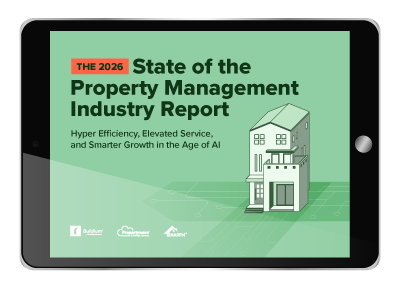Tenant turnover is a significant challenge for residential property managers. It’s a natural part of property management, but with the right strategies, you can manage it effectively. Understanding the causes, impacts, and ways to minimize turnover will help you run a successful and profitable rental business.
In this blog post, we’ll explain what tenant turnover is, explore its causes and consequences, and offer practical strategies to help reduce its impact.
What Is Tenant Turnover?
Tenant turnover occurs when tenants move out and new tenants take their place. It can happen for various reasons, ranging from lease expiration to personal changes. Although turnover is unavoidable, managing it well is key to maintaining high occupancy rates, protecting rental income, and keeping operations running efficiently.
As a property manager, understanding tenant turnover helps you plan for vacancies, reduce downtime, and minimize the costs associated with finding new tenants. Reducing turnover also supports the long-term success of your rental business.
Causes of Tenant Turnover
Several factors contribute to tenants deciding to move. The reasons can vary based on individual circumstances, but here are some common causes:
- Lease Expiration: When a lease ends, tenants may choose to renew, move to another property, or leave. If the rent is too high, the property condition isn’t ideal, or their situation changes, they may decide not to stay. Lease renewals depend on tenant satisfaction and the rental market.
- Rent Costs: Rent increases can prompt tenants to move, especially if the rent becomes unaffordable or higher than similar properties in the area. A sudden price hike can lead tenants to search for a more affordable living situation.
- Job Relocation or Life Changes: Tenants often move due to changes in their job location, family needs, or other personal factors. These reasons are often outside the property manager’s control but still significantly affect turnover.
- Maintenance and Property Conditions: Tenants may leave if they are unhappy with the property’s condition or if maintenance issues aren’t addressed quickly. Neglecting maintenance can lead to frustration, forcing tenants to seek better living conditions elsewhere.
- Lifestyle or Personal Preferences: Changes in lifestyle, such as the need for more space or a different location closer to work or school, may lead tenants to seek new accommodations.
Market trends, such as fluctuating housing demand or shifts in the local economy, can also impact turnover. For example, during an economic downturn, tenants may need to downsize or relocate due to financial constraints. Conversely, a strong local economy may increase housing demand, leading to more competition for rental properties.
Impacts of Tenant Turnover
Tenant turnover can have significant financial and operational consequences. While some impacts are unavoidable, managing them effectively can reduce their overall burden.
Financial Costs
Vacancy Losses: When a tenant moves out, you may face a period of vacancy where no rent is collected. This downtime can harm your cash flow, especially if it lasts for weeks or months.
Advertising and Marketing Expenses: Filling vacancies requires time and resources. Advertising on rental websites, hiring a leasing agent, or using professional services all incur costs.
Tenant Screening and Lease Administration: Screening new tenants involves background checks, credit reports, and reference verification, all of which require both time and money. Additionally, managing lease renewals and legal requirements adds to administrative costs.
Property Maintenance: After a tenant moves out, the property often requires cleaning, repairs, or upgrades before new tenants can move in. These costs can add up, especially when tenants leave behind significant damage.
Operational and Atmosphere Impact
Community Morale: High turnover rates can disrupt the sense of community in multi-unit properties. Constant changes in neighbors can lead to instability, affecting tenant satisfaction. A lack of consistency may make it harder to build a strong sense of community.
Increased Workload: When tenants move out frequently, property managers face more work in handling leases, conducting property showings, and managing the move-in process for new tenants. This can add significant pressure to your workload.
Strategies for Minimizing Tenant Turnover
While turnover can’t be completely eliminated, you can reduce its frequency and impact with a few key strategies. By focusing on tenant satisfaction and property conditions, you can lower turnover rates and keep tenants for longer periods.
1. Maintain a Welcoming and Well-Kept Property
Tenants are more likely to stay if they feel comfortable and enjoy their living space. Ensure the property is clean, functional, and well-maintained. Regular inspections help identify and address issues early, preventing small problems from turning into larger, costly repairs. Offering updates, such as upgraded appliances or fresh paint, can also increase tenant satisfaction and retention.
2. Improve Communication with Tenants
Open, transparent communication is crucial for maintaining good relationships with tenants. Respond to maintenance requests promptly, check in periodically, and encourage feedback. If tenants feel heard and valued, they are more likely to stay long-term. Regular communication fosters trust, which is essential for tenant retention.
3. Address Maintenance Concerns Quickly
Failing to address maintenance issues can cause frustration and lead tenants to move. Ensure all maintenance requests are handled promptly and professionally. Consider implementing a maintenance management system that allows tenants to submit requests easily and track progress. This demonstrates that you are committed to maintaining a high standard of living for your tenants.
4. Offer Lease Renewal Incentives
Encourage tenants to renew their leases by offering incentives. This could include freezing the rent for another year, offering small property upgrades, or providing a discount on renewal fees. These gestures show tenants that you value their business and want them to stay.
5. Thorough Tenant Screening
One of the most effective ways to prevent high turnover is to select the right tenants from the beginning. Use a comprehensive screening process that includes background checks, credit reports, and reference checks. Choosing reliable tenants who meet your criteria will reduce the likelihood of early lease terminations or problems that may drive them to leave.
Frequently Asked Questions
How can I attract reliable tenants?
Thoroughly screen potential tenants using background checks, credit reports, and reference checks. Offer a well-maintained and welcoming property to attract those who are likely to stay long-term.
What incentives can I offer for lease renewals?
Freeze the rent for another year, add small property upgrades, or give a discount on renewal fees. Show tenants that you value their business and want them to stay.
How can I improve tenant satisfaction?
Improve tenant satisfaction by maintaining a clean and well-kept property, addressing maintenance concerns quickly, and facilitating open communication. Regularly check in with tenants and encourage feedback to ensure they feel heard and valued.
Read more on
